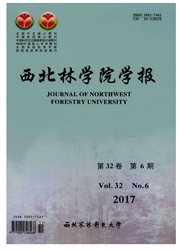

 中文摘要:
中文摘要:
随着城市化进程的快速推进,中亚城市化的发展成为近些年来该领域关注的新的研究重点。以中亚第二大城市塔什干市1989、2000、2010年的遥感图像为数据源,获取塔什干市城市用地信息,并借助城市年均扩展速度、扩展强度指数及城市用地分形维数等参数,对塔什干市时空变化进行分析。结果表明:近21年来塔什干市的土地利用类型有明显的变化,其中建设用地的变化比较明显,呈现不断扩张的趋势,在1989—2000年期间平均扩展面积约为4.55km2/a,年扩展率为1.99%;2000—2010年平均扩展面积约为7.38km2/a,年扩展率为2.55%。其中增加的建设用地主要由周围的草地和未利用地转移而来;从分析可得:2000--2010年的扩展强度比1989--2000年的要高0.68%;分形维数逐渐增大,城市空间形态日益复杂化。
 英文摘要:
英文摘要:
With the rapid development of urbanization, the urbanization in Central Asia become con- cerned about the new research directions in recent years. In this paper, using remote sensing images in 1989,2000,2010 year of the capital of Uzbekistan, Central Asia's second largest city, Tashkent, got the in- formation of urbanization and also analyzed spatio--temporal changes using the average annual rate of ex- pansion.fractal and urbanization intensity index. The results show that. Over the past 20 years, Tashkent city land use types have significant changes; especially the changes of urban land are more obvious. Con- struction sites constantly expanding, during the first period 1989--2000 the expanding area of average an- nual expansion and urbanization intensity index are 4.55 kmz and 1.99 % respectively; during the second period 2000--2010 the expanding area of average annual expansion and urbanization intensity index are 7. 38 km2 and 2.55 %. The increasing of urban area mainly converted from the surrounding grassland and un- used land; Extension strength (2.86%) in 2000--2010 is higher than the period of 1989--2000 ;The frac- tal index was increasing,implying that the urban spatial configuration in Tashkent became more and more complex.
 同期刊论文项目
同期刊论文项目
 同项目期刊论文
同项目期刊论文
 期刊信息
期刊信息
